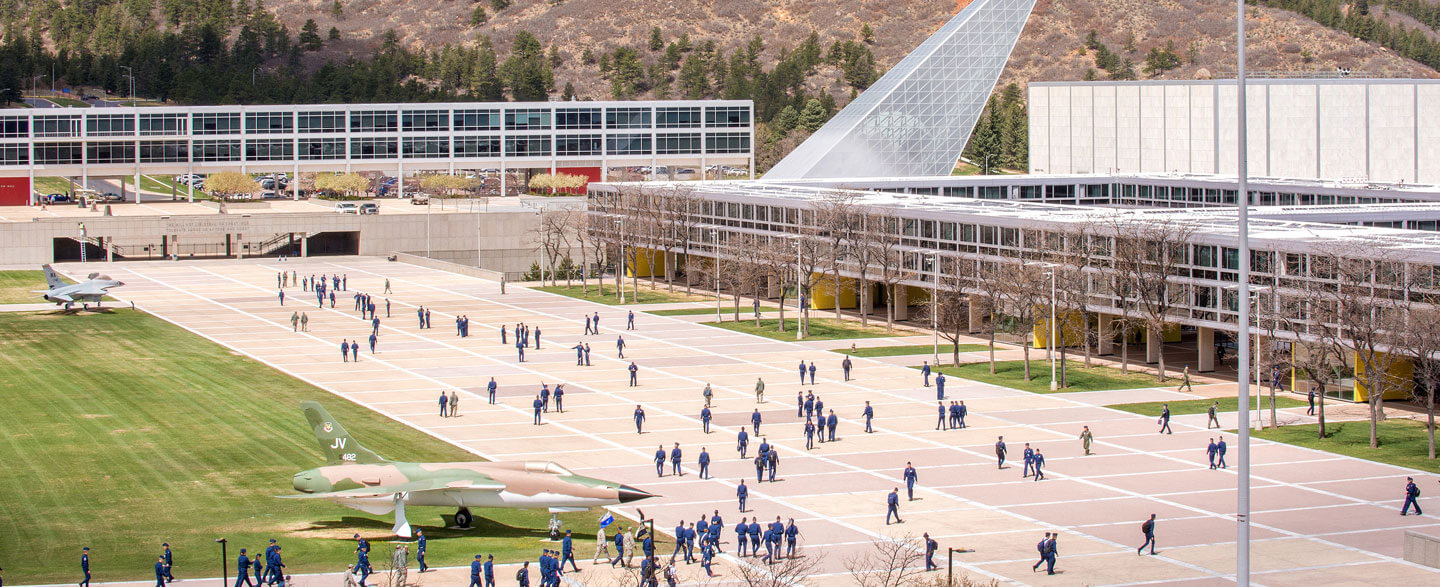What Life is Like at the Academy's Altitude

What is Life Like as a Cadet?
Cadets at the U.S. Air Force Academy face a rigorous schedule of academics, athletics, military training, high expectations, and strict rules of conduct. Cadets are constantly challenged physically and mentally. Those who persevere will join the Long Blue Line of more than 50,000+ graduates who were challenged before them.
Within the Cadet Wing, the Commandant of Cadets and their staff oversee military training, extracurricular activities, clubs and various other aspects of life at the Academy. Here, it’s not about where you come from, but what you show up with. Regardless of race, religion or background, we prioritize equal treatment and equal opportunity. To learn more about this unique environment, explore the Frequently Asked Questions.
How to make a cadet bed
Rooms in our two dormitories, Vandenberg Hall and Sijan Hall, are approximately 3 feet wide and 6 feet long and contain a counter with a built-in sink, a large mirror and a medicine cabinet. There are typically two cadets per room with each having a twin-size bed, large closet, dresser and desk. To pass inspections, a cadet bed needs to be made perfectly.
How to put together cadet service dress
Although cadets primarily wear airman battle uniforms (ABUs) to class and physical conditioning (PC) gear for physical education classes, service dress is commonly worn for more formal events. To properly represent the dignity and legacy of the Air Force, cadet service dress needs to be pristine.
How to organize a cadet drawer
Upon arriving, cadets are issued laptops, uniforms, bedding and linens. A cadet drawer needs to be properly prepared to pass inspections.
How to shine shoes
Shining shoes is a time-honored tradition that reflects pride in appearance and attention to detail. Our cadets polish their shoes once a month to create a protective layer and keep their shoes shiny. Top Tip: for extra high shine, apply another coat of polish, sprinkle with water, and buff with shine cloth.
How to tie hair in a bun
Often our female cadets prefer to wear their hair in a bun. Low ponytails are also approved as are one or two braids worn down the back. Hair length will not extend below an imaginary horizontal line running between the top of each sleeve inseam at the under arm through the shoulder blades. Learn more in DAFI 36-2903.
How to prepare & wear beret
To properly wear a beret, our cadets position the headband straight across the forehead, 1-inch above the eyebrows. They drape the top over the right ear and the stiffener. They align cloth flash above their left eye with Prop and Wings centered over the left eye. Top tip: When adjusting the ribbon for comfort, tie in a knot and cut-off excess ribbon.
How to wear a backpack
Backpacks are worn on both shoulders to not interfere with rendering the proper salute. Backpacks do not have any ornamentation, high-gloss, designs, or hanging/dangling objects. Backpacks are worn high on the back to decrease pressure on the shoulders and reduce lower back strain.
How to tie a tie
Our cadets wear a tie with the service dress uniform and/or service blue uniform. The tip of the tie must cover a portion of the belt buckle but cannot extend below the bottom of the belt buckle. Top tip: for an even more polished look, some of our cadets wear a tie tack or clasp consisting of the “wing and star” design, Air Force symbol, or rank insignia.